-
Product Name
COPB2 Polyclonal Antibody
- Documents
-
Description
Polyclonal antibody to COPB2
-
Tested applications
WB, IHC, IF
-
Species reactivity
Human, Mouse, Rat
-
Alternative names
COPB2 antibody; beta'-COP antibody; coatomer subunit beta' antibody
-
Isotype
Rabbit IgG
-
Preparation
Antigen: Recombinant fusion protein containing a sequence corresponding to amino acids 657-906 of human COPB2 (NP_004757.1).
-
Clonality
Polyclonal
-
Formulation
PBS with 0.02% sodium azide, 50% glycerol, pH7.3.
-
Storage instructions
Store at -20℃. Avoid freeze / thaw cycles.
-
Applications
WB 1:500 - 1:2000
IHC 1:50 - 1:200
IF 1:50 - 1:100 -
Validations
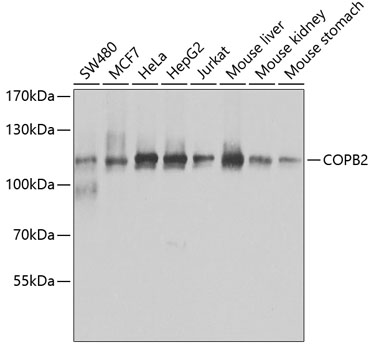
Western blot - COPB2 Polyclonal Antibody
Western blot analysis of extracts of various cell lines, using COPB2 antibody at 1:1000 dilution.Secondary antibody: HRP Goat Anti-Rabbit IgG (H+L) at 1:10000 dilution.Lysates/proteins: 25ug per lane.Blocking buffer: 3% nonfat dry milk in TBST.Detection: ECL Basic Kit .Exposure time: 5s.
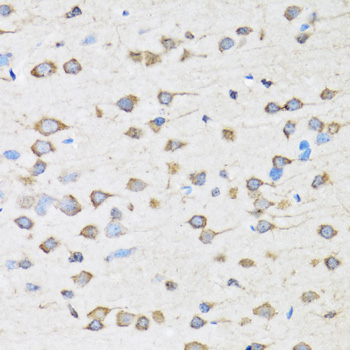
Immunohistochemistry - COPB2 Polyclonal Antibody
Immunohistochemistry of paraffin-embedded rat brain using COPB2 antibody at dilution of 1:100 (40x lens).
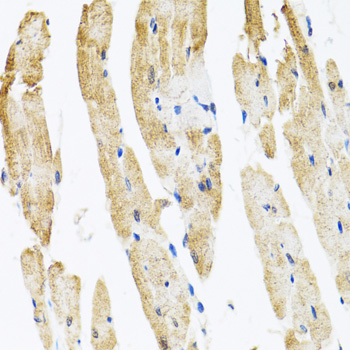
Immunohistochemistry - COPB2 Polyclonal Antibody
Immunohistochemistry of paraffin-embedded rat heart using COPB2 antibody at dilution of 1:100 (40x lens).
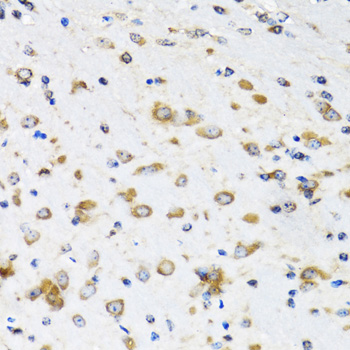
Immunohistochemistry - COPB2 Polyclonal Antibody
Immunohistochemistry of paraffin-embedded mouse brain using COPB2 antibody at dilution of 1:100 (40x lens).
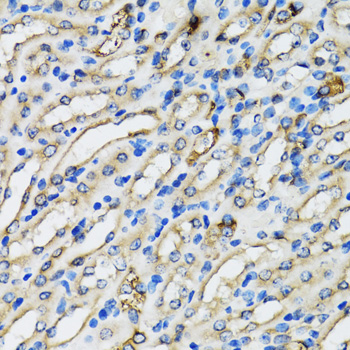
Immunohistochemistry - COPB2 Polyclonal Antibody
Immunohistochemistry of paraffin-embedded mouse kidney using COPB2 antibody at dilution of 1:100 (40x lens).

Immunohistochemistry - COPB2 Polyclonal Antibody
Immunohistochemistry of paraffin-embedded mouse heart using COPB2 antibody at dilution of 1:100 (40x lens).
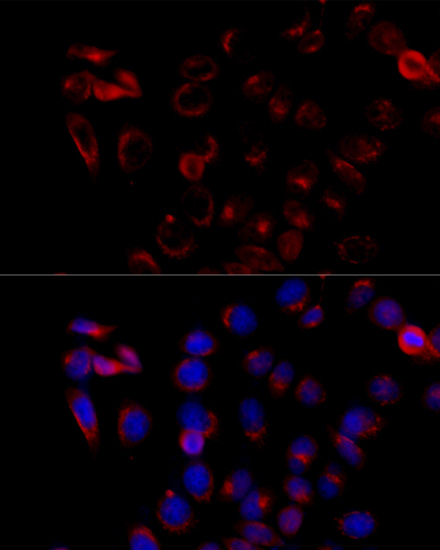
Immunofluorescence - COPB2 Polyclonal Antibody
Immunofluorescence analysis of HeLa cells using COPB2 antibody at dilution of 1:100 (40x lens). Blue: DAPI for nuclear staining.
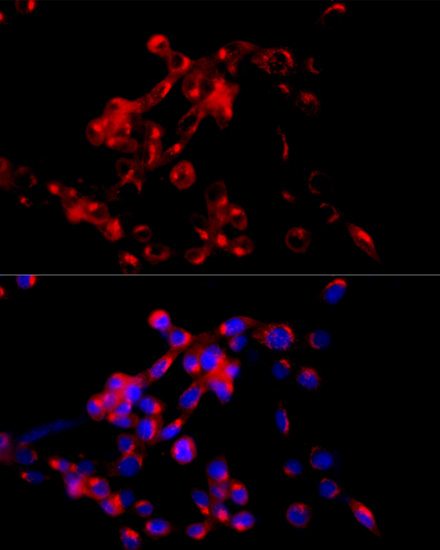
Immunofluorescence - COPB2 Polyclonal Antibody
Immunofluorescence analysis of NIH/3T3 cells using COPB2 antibody at dilution of 1:100 (40x lens). Blue: DAPI for nuclear staining.
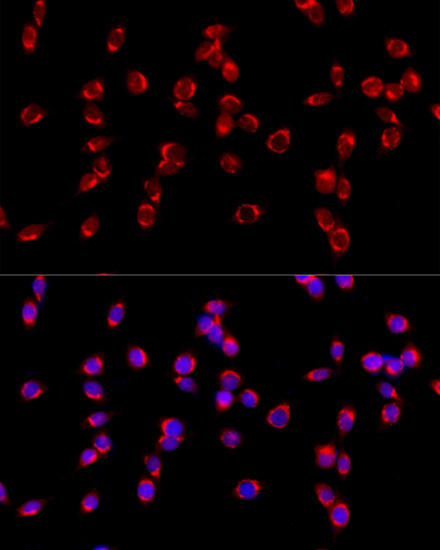
Immunofluorescence - COPB2 Polyclonal Antibody
Immunofluorescence analysis of PC-12 cells using COPB2 antibody at dilution of 1:100 (40x lens). Blue: DAPI for nuclear staining.
-
Background
The coatomer is a cytosolic protein complex that binds to dilysine motifs and reversibly associates with Golgi non-clathrin-coated vesicles, which further mediate biosynthetic protein transport from the ER, via the Golgi up to the trans Golgi network. Coatomer complex is required for budding from Golgi membranes, and is essential for the retrograde Golgi-to-ER transport of dilysine-tagged proteins. In mammals, the coatomer can only be recruited by membranes associated to ADP-ribosylation factors (ARFs), which are small GTP-binding proteins; the complex also influences the Golgi structural integrity, as well as the processing, activity, and endocytic recycling of LDL receptors (By similarity).; This coatomer complex protein, essential for Golgi budding and vesicular trafficking, is a selective binding protein (RACK) for protein kinase C, epsilon type. It binds to Golgi membranes in a GTP-dependent manner (By similarity).
Related Products / Services
Please note: All products are "FOR RESEARCH USE ONLY AND ARE NOT INTENDED FOR DIAGNOSTIC OR THERAPEUTIC USE"
